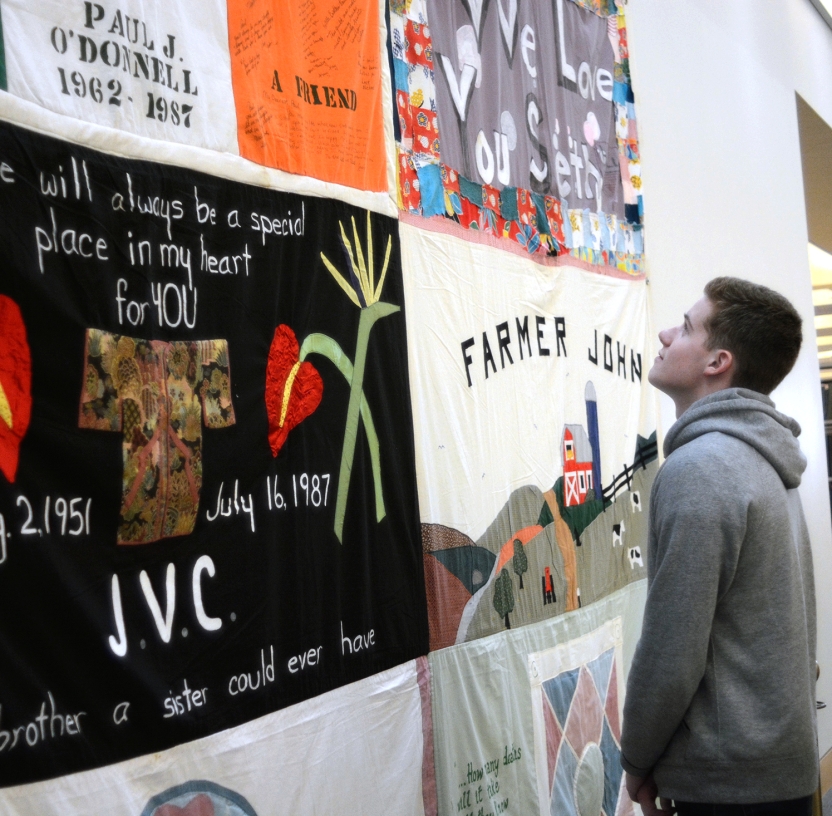Revisiting the AIDS Quilt, Three Decades On

MIDDLEBURY, Vt. – It’s been nearly three decades since the first quilt memorializing loved ones lost to AIDS was created in San Francisco at the height of the U.S. pandemic in 1987. Today, the AIDS Memorial Quilt contains 94,000 names on 48,000 panels. A large panel containing eight of those individual stories is on display at Middlebury’s Davis Family Library through the month of April.
Deborah Evans, visiting assistant professor of American Studies, helped bring the quilt to Middlebury as part of a course titled “Constructing Memory: American Monuments and Memorials.”
“In general, we want students to think more deeply about memorials and monuments in U.S. culture,” said Evans. “Why do we remember certain events or individuals? How does the form of the monument or memorial affect that remembrance and create narratives about national identity?”
Evans and her co-instructor Lisa Gates, associate dean for fellowships and research, say the AIDS quilt has elicited interesting reactions from students, who can’t remember a time when HIV/AIDS was not considered treatable.
“I was really surprised at the number of people in our class who didn’t know what the AIDS quilt was until taking our Monuments and Memorials class this spring,” said sophomore Mimi Matthews. “More than half the class didn’t know what it was, and just about a fourth of the class didn’t even know the real definition of what AIDS was.”
“Our impression thus far is that the quilt is recognized as an historical artifact,” said Evans. “Some students noted that the HIV/AIDS epidemic has lost some of its emotional potency. They are curious about why it has been memorialized with what is essentially an impermanent memorial.”
Senior Clair Beltran says learning about the quilt has changed her perspective on what a monument or memorial can achieve. “It helps show and emphasize AIDS –a disease which was very much a part of personal life but removed from the public political life – as a personal fight, and these panels help solidify it as a part of individual and cultural memory,” said Beltran.
Other faculty members have also taken advantage of the quilt’s presence to enhance their courses this semester. Kevin Moss, the Jean Tomson Fulton Professor of Modern Language and Literature, asked students in his Introduction to Gay and Lesbian Studies course to visit the quilt before their class discussion on AIDS. “I hope it makes the crisis a bit more real for them–they were all born after the worst part of the crisis was over, so now the devastation is part of ‘history,’” said Moss. “Sometimes it’s hard for them to imagine how bad things were back in the 80s.”
Evans and Gates say they are interested in how generational differences impact visitors’ experience with the quilt, and have invited visitors to share their own reflections through an interactive component next to the exhibit.
The AIDS quilt is just one of many memorials the class will study this semester. In a perfect world, Gates notes, “we would be teaching this course in Washington D.C. and other locations, but this was one memorial we could bring to campus, to our students.”
The AIDS quilt panel exhibit is open to the public and will be on display on the second floor of the Davis Family Library through the end of April.
Reporting by Stephen Diehl; Photo by Robert Keren

